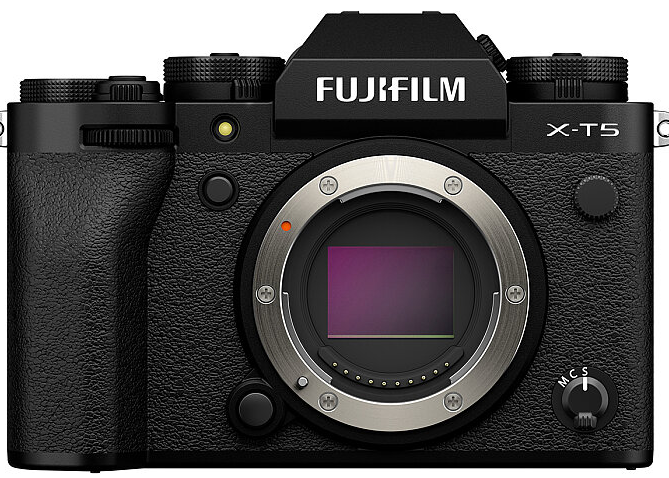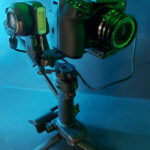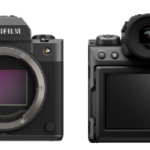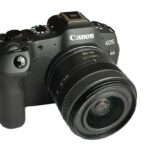Arguably, digital photography has made it much easier for the average person to graduate from a point and shoot camera or smartphone, to something rather more exotic. No longer are you bound by dials and numbers. For the non-adventurous, simply turn one dial to “A” for Automatic and each of the smart little electrons inside the transistors on a small green circuit board will zip into the correct position, turn on a little OK sign, and the camera will faithfully take the shot according to all the current conditions. As it sees them anyway.
This gives you the best of both worlds; excellent lenses with super smart technology all without you knowing a damn thing about the mechanics or science of photography.
Of course, if you do like to get under the bonnet into the nuts and bolts, you can, by negotiating all of the appropriate menus and adjusting settings accordingly.
However, I was brought up in the world of photography in the analogue era, and graduated to digital as against launching directly into it. Consequently, I like the option of using dials to set aperture, shutter speed, ISO (that used to be called ASA) and focus and zoom.
So, when I opened the box containing a review Fujifilm X-T5, I was like a kid with a new wind-up toy robot in the 60s again.

As you can see from the attached photo, there are dials on the X-T5 as far as the eye can see. Well, not really, but you get my drift. And before anyone grumbles about dials being able to be easily knocked, Fujifilm have thought of that as they can be locked in position.
The camera also came with a 14mm f/2.8 Fujifilm lens, which is not my usual lens for shooting with my penchant for motor sports and the like. Nonetheless, like all Fuji lenses, it didn’t fail to perform the goods.
I tested the XT-5 primarily as a video camera and in that role, the Fuji X-T5 is very good. Very, very good in fact.
I’m not going to delve into all the technical specifications as this is just rehashing what is easily accessible here on the Fujifilm website if you are interested. Instead, I want to concentrate on the features of the X-T4 that I liked – and some I disliked.
Actually, to cover that part first, “dislike” is the wrong word to use for one area. Disappointed would be more apt, as in reality, it has nothing much to do with Fujifilm. I was rather hoping to test the capabilities using a gimbal, of which I have a number. But it was with, yes, disappointment, I discovered that neither the Zhiyun M2S Crane or Weebill 3 supported the Fujifilm X-T5.
“Not to worry”, I thought, “the trusty DJI Ronin SC3 will.
Nope.
Now this is usually for one of two reasons; the camera manufacturer has not made the API programming details available to the gimbal manufacturer, or the gimbal manufacturer can’t be bothered as they don’t see a market in that particular make and model. I think I can rule out the first as many other Fujifilm cameras are included in both Zhiyun and DJIs specs, so can only assume the second, which is a huge shame.
What I did think could be improved was the autofocus system. It just didn’t seem as responsive as say the X-T20, and in the flower video you can see it doing a little hunting here and there. A quick check around other reviews saw the same reaction I had, so no doubt Fujifilm will take this into account.
On a brighter note, as I spend much of my shooting time with cameras either on gimbals or tripods, and 4K RAW footage takes up sh*tloads of storage space necessitating in regular SD card changes, I am pleased to say that Fujifilm has opted to place the SD card slot on the side of the X-T5 and not in the battery compartment.
I loved the ergonomics as well. Everything is where it should be and falls easily under the fingers. And if you forget something, the legendary Fujifilm Q button is right there.
The viewfinder is bright and sharp as is the LCD screen that lifts and extends and tilts, but sadly does not rotate.
There is no built-in flash, but there is a suitable hotshoe mounted on the top in the usual location.
Conclusion
If I was looking for a mid-range mirrorless camera, the Fujifilm X-T5 would be on my “must look closer” list. The lack of gimbal support for many is not a deal breaker, but the auto focus issue may well be, depending on what you shoot of course. If you are a die-hard manual person, this becomes of little consequence.
The image quality is brilliant. The 40 megapixel sensor gives outstanding imagery, and let’s face it, at the end of the day, this is what matters most.
Cost
The Fujilm X-T5 body alone can be purchased for AUD$2519 and with an 18 -55mm kit lens for AUD$3293 according to my Google searches of Australian retailers.
Sample Footage










